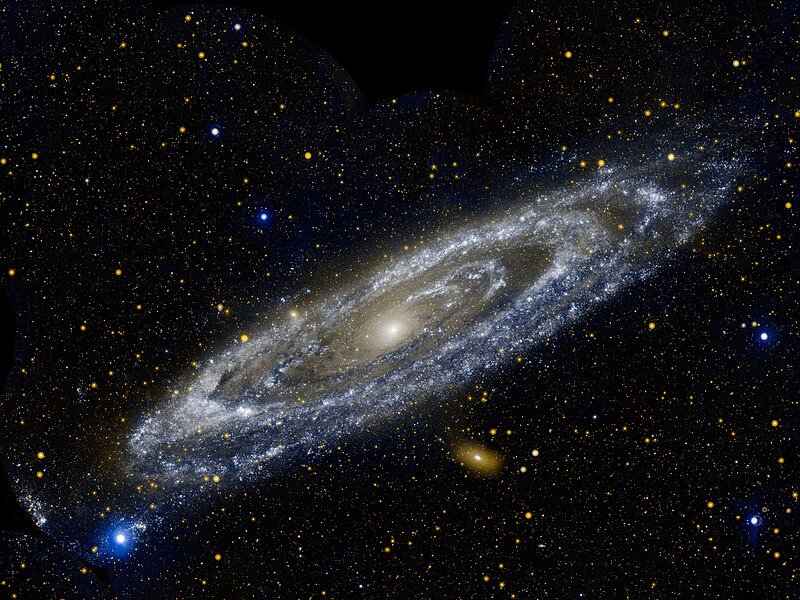Archivo:Andromeda galaxy 2.jpg
De LibreFind

Tamaño de esta previsualización: 800 × 600 píxeles. Otras resoluciones: 320 × 240 píxeles | 640 × 480 píxeles | 1024 × 768 píxeles | 1280 × 960 píxeles | 6000 × 4500 píxeles.
Archivo original (6000 × 4500 píxeles; tamaño de archivo: 21,44 MB; tipo MIME: image/jpeg)
Historial del archivo
Haz clic sobre una fecha/hora para ver el archivo a esa fecha.
| Fecha y hora | Miniatura | Dimensiones | Usuario | Comentario | |
|---|---|---|---|---|---|
| actual | 11:09 21 may 2012 |  | 6000 × 4500 (21,44 MB) | Originalwana | {{Information |Description ={{en|1=Hot stars burn brightly in this image from NASA's Galaxy Evolution Explorer, showing the ultraviolet side of a familiar face. At approximately 2.5 million light-years away, the Andromeda galaxy, or M31, is our [[:C... |
Usos del archivo
La siguiente página enlaza a este archivo:

